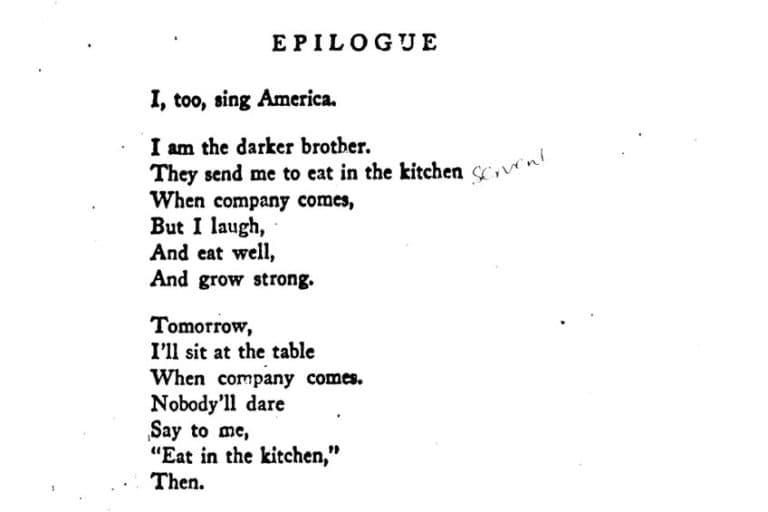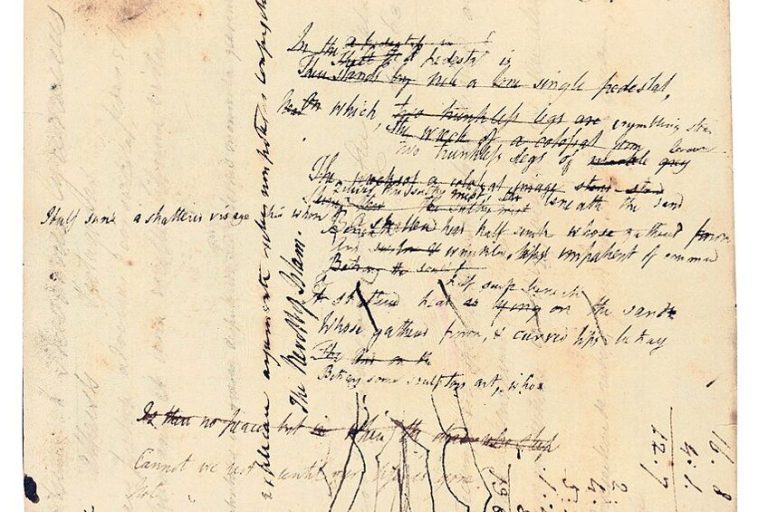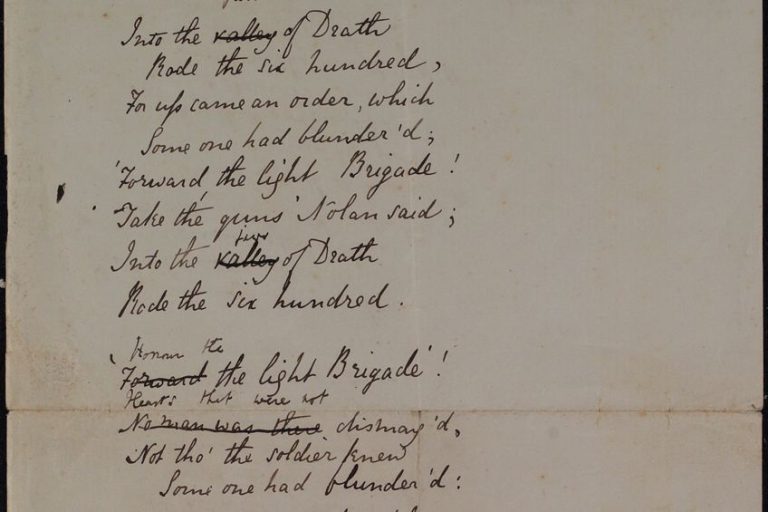TPCASTT Poetry Analysis – The Best Way to Dissect a Poem
What is TPCASTT poetry analysis? This fairly easy-to-remember little acronymic expression is a template for the analysis of poetry. This makes it perfect for students who have started learning about poetry. This article will examine this TPCASTT template and explain what each of the letters stands for, how applicable it is as an analytical method, and will end with a brief demonstration of how it could be used. So, if you need to make use of TPCASTT poetry analysis in your studies, look no further as we explore how to use this useful analytical template below!
A Look at TPCASTT Poetry Analysis
When you’re just starting out with poetry in an educational environment, it can be difficult to know where to start when it comes to poetry. What do you analyze when you’re told to analyze, and how should you explore the various parts of a poem? The TPCASTT template gives you a perfect and easy-to-understand (and hopefully, as an acronym, an easy-to-remember) format for the analysis of poetry.

The TPCASTT poetry analysis approach is quite simple as each letter stands for a different part of the poem that you need to analyze. In brief, it can be laid out in the following way, but keep in mind, that each of these will gain elaboration later:
- T is for Title: A look at the title of the poem without any understanding of the contents found within it to try and gain an understanding of what the poem may be about based on the title alone.
- P is for Paraphrase: A breakdown of the poem’s more difficult components to better understand parts of it that may otherwise cause some students to struggle with aspects of the poem.
- C is for Connotation: A deeper breakdown of the connotative (or figurative) meanings of the poem. This is often the lengthiest part and gets through the bulk of the poem’s messaging.
- A is for Attitude/Tone: An examination of the general attitude that the writer of the poem is trying to get the reader to feel and understand. The use of “attitude/tone” is because these two terms can often be seen as synonyms.
- S is for Shift: An examination of the way in which the poem may shift its meaning or tone, such as transitioning from a lighter to a darker tone, or anything similar. This can aid in understanding the true message behind the poem.
- T is for Title (again): A retrospective view of the title once again. The reason that the title is examined again is because now, with an understanding of the poem itself, there may be a new meaning to be found in the name of the poem.
- T is for Theme: An analysis of the main themes, or subject matter, of the poem now that the entire thing has been more readily broken down and can be easily understood. This is the final part of the analysis.
This short look at the entire acronym of the TPCASTT template is good for those who need a general overview, and these bullet lists can be beneficial for students who need a reminder. However, for a deeper dive into the actual approach, you will need to keep reading to examine how each of these can be used in greater depth.
This analysis technique is fairly comprehensive though, and so you are unlikely to miss anything particularly major if you do decide to make use of this particular style of analysis.
How to Perform a TPCASTT Poetry Analysis
Now that we have provided a briefly summarized view of the TPCASTT poetry analysis approach, let’s dive in with a deeper look at each of these aspects and discuss how they can be used in the abstract. Then we can move on to a look at their applicability, including upsides and downsides, before ending with a demonstration of this approach. So, let’s go through each of the letters that make up the TPCASTT template.

T for Title
The title is the very first thing that you will see in a poem, and that title can often be just as obscure as the text of the poem itself. Think of books and movies in this case. They will have a title, but that title is only truly understood, most of the time, once you have some understanding of the contents of the text. The same is true of poetry. So, when you perform a TPCASTT poetry analysis, you need to start by looking at the title.
What does the title suggest to you? What does it make you think about? Does it give you any hints about the poem’s contents? Does it hold any special meaning that you could possibly discuss? All of these aspects can be written out and prepared because your understanding of the title will change as you read through the poem.
It should also be noted that not all poem titles are all that significant.
There are poems that do not have titles at all, in which case, the first line is often seen as the “title”, in a sense. In addition, some poetry collections, such as the famous sonnet collection of William Shakespeare, do not name any poem, and so the poems are actually numbered. This is simply where they are in the collection of poems, but they have come to be known under their first line.

The title is an important part of the poem as it sets up what the poem is going to be about, and as you read the poem, you will gain a retrospective understanding of why that particular title had been used. However, we will get to that part of the TPCASTT template when we examine the title again near the end of the analytical approach.
P for Paraphrase
Paraphrasing is a term that refers to taking something that already exists and rewriting or retelling it in a shorter form. Basically, it’s a summarization. Being able to summarize a text becomes very important for any student, as one needs to understand how to break something down into its base components, but it is used a little differently in this sense.
Remember that poems are often written with a specific typography, meaning the layout of the lines, and it’s broken into stanzas. However, when you are trying to understand a poem, you may struggle with those parts of it, and so the TPCASTT poetry analysis technique involves breaking it down into a more easily readable text.
This means that you will take the poem as it is and rewrite it in your own terms.
This is especially helpful for sections that might be phrased in strange ways. You simply rewrite it so that it makes sense. This can also often mean taking harder words and finding synonyms for them. Many poets, especially the poets that schools like to give to their students, are intentionally difficult, feature higher-level vocabulary, and can be hard to parse. Paraphrasing lets you remove those barriers and actually understand what is being said in the poem.

This will allow you to find the meaning of the poem in more simple terms and in a simpler format. For instance, rewriting a poem as a paragraph, removing the rhyme and other techniques, and looking at the barebones poem. From there, you will be able to better understand the connotations that can be found in the poem.
C for Connotations
Connotation is a term that you will come across quite often in English classes, and it can often be easiest to understand it by looking at its exact opposite. The antonym of the word “connotation” is “denotation”, and it is not as commonly used, but its meaning helps to understand what you need to look for with connotations. Denotation is the dictionary definition of something, the basic meaning, the simple meaning, and the actual meaning of a word. Connotation is the way a word feels, what it suggests, the kind of metaphors it produces, and so on. For instance, red is a color, and that would be its denotative meaning, but red connotes a number of other things like love, war, fire, passion, and so on.
This is what you are going to be looking at. When you paraphrased the poem, you broke it down into easy-to-understand denotative pieces. Now, it’s time to look at the connotative pieces. You need to understand what the poem is actually trying to say. Why is it using a metaphor? Why is it using certain devices? Why has it been written in the first place?
Imagine a poem that says something like: “My love for you is a rose.”
We all know what a rose is, it’s a flower. However, it also has many layers, and so we can see it as a metaphor for a deep and multilayered love. We may not even be able to see the center of that love because it is surrounded by so many other parts. A rose never thought to represent that for people, but that is what it has come to mean.
This part of the TPCASTT poetry analysis approach is also the most important because you also need to break down why literary techniques are used. Why did the poet make use of imagery? Why did they use alliteration? Why did they use rhyme? There are many parts of a poem that can be interrogated in this way, and each of them is just as important as the last. You need to try and cut through the basic understanding of the poem, the simplistic reading, and look at it from a deeper perspective.

You will likely spend the longest time on this part of the TPCASTT template. From here, you’re actually most of the way done though. Because once you have understood the poem itself, once you have grasped its connotative meaning, you can easily sweep through the rest of this analytical approach.
A for Attitude/Tone
Now that you understand the connotations of the poem, it is easy to see the attitude/tone. The reason there are two different words here, and the second one does not actually start with the letter “A”, is because these two terms are often seen as synonyms for one another. They are not actually synonyms, and there are certain distinctions that can be drawn between attitude and tone, but they can often overlap with each other. So, let’s treat them as if they are completely the same because we’ll otherwise get bogged down in very precise and annoying definitions.
Attitude/tone, in basic terms, both refer to the feeling of a poem. What was the poet trying to express to you with the way they were speaking? Did they feel angry, sad, melancholic, nostalgic, or some other emotion? Any of these general moods can inform the way that the poet was trying to express what they wanted you to understand when you read their poem.
Do you feel the same way when reading this poem? Can you feel the anger, sadness, and so on?
This part of the TPCASTT template is very simple now that the connotations have been broken down and understood. You will easily be able to see the feeling that the poem is trying to produce. So, write that down, but be ready to argue why you claim that to be the case. This means that you need to make sure you have evidence from the poem. As a quick explanation of this, consider the following two words: “murder” and “kill”.

If there is a poem that uses one or another of these two words, why did it use that particular word? The tone of murder is far more severe than the tone of kill. You can kill by mistake. You cannot murder by mistake. Murder implies that a crime is premeditated, it was planned, and it was a desirable outcome. Kill is far more neutral. The result is the same, a dead person, but the way they wound up that way is very different based on which word is used. Pay attention to things like this when examining and analyzing the attitude/tone of the poem you are analyzing.
S for Shifts
This part of the TPCASTT poetry analysis approach is one of the easiest. You simply need to find the point at which some kind of a shift has occurred in the poem. Shifts are very common in poetry. In fact, there is a special word for a shift in a sonnet, and it’s called a volta. This is the point at which the original topic of the sonnet switches to another sonnet.
Imagine a poem that first uses highly emotive and idealized terms to describe love for someone, but then shifts to say that the poet’s love for that person may not last forever.

This is a topic shift, and they are very common in poems. However, that is only the most obvious shift. Shifts can also take place in the form of sudden changes in the stanza structure, a line break that is unusual, punctuation changes, and so on. In this part of the analysis, you need to find these changes in the tone and try to understand why they have happened. Why has the poet made use of these shifts?
T for Title (Again)
You have analyzed the poem at this point. You’re practically done! So, it’s time to look at the title again. When you first read the title, provided there was a title, you did not know what the poem was about and so you were basically guessing what the poem would be about. You have now read and analyzed the poem. You have finished going through most of the letters in the TPCASTT template.
This means that you can now re-examine that title.

Has the meaning changed? Do you now understand the title in a different way? Does it change the meaning of the poem as a whole now that you know the title? Has it made it harder to understand the poem? Were the words in the title even used in the poem? All of these questions should be interrogated and applied when performing this second-to-last part of the analysis of a poem.
T for Theme
The analysis is practically at an end and all the parts have been broken down into their composite parts. It’s now time for the final part of the analysis. That entails asking: “So, what was the poem about anyway?” The themes of the poem can now be seen. You have stripped away all of the connotations, examined the title on numerous occasions, and noted any shifts and poetic permutations.
What is the poem about? What is it trying to say? Is it about love? Is it about death? Is it about something else?

When you write about the theme, you need to give evidence from the text, as you should always do. However, once you have done so, you are officially at the end of the TPCASTT poetry analysis approach. You have moved your way through the template, and you can finally finish up your analysis.
The Applicability of TPCASTT Poetry Analysis
We have finished with our breakdown of the TPCASTT template and what each of the letters represents, but let’s ask a final question before we move on to the final section of this examination of the TPCASTT poetry analysis approach. That question is as follows: “How applicable is the TPCASTT poetry analysis system?”. Is it good? Is it beneficial to you as a student?
The answer to this is multifaceted. On one hand, this is a great approach because you get to have a comprehensive breakdown of an analysis tool that uses an acronym. Acronyms are great for having to remember things because they already sound, sort of, like a word. So, if you had to analyze a poem in an exam, it’s easier to remember an acronym like this than to have to remember a more in-depth approach. This is a great thing about it.
Various parts of the TPCASTT poetry analysis approach also presume that a poem will be difficult to understand.
One of the sections literally sees you changing words to help you understand the poem. This is because schools tend to choose harder poems. They use more intellectual poems, or influential poems, rather than poems that are enjoyable to read. Thanks to this, the TPCASTT template is very helpful. If the poem is hard, you probably want a highly formalized approach to analyzing it so that you don’t get stuck. The use of hard poems in schools does reinforce the idea that poetry is not for everyone, and so there are problems with that, but that is also a far longer conversation and one that will not be discussed right now.
However, another big problem with the TPCASTT poetry analysis approach is that it does not tell you how to turn this raw analysis into an adequate essay. A great analysis is all good and well, but if you can’t present it in a readable fashion, then it is ultimately pointless. So, the TPCASTT template only helps you with the baseline of an acceptable analysis, especially at the university level, but the analysis needs to be broken down into better component parts than those that are presented in the actual analysis.

In addition to this, because of the highly formalistic nature of this approach, it suggests that poetry analysis can be quite objective when it is not. The way you interpret a poem will be different from the way someone else interprets a poem. Neither of your interpretations is necessarily correct or incorrect, but they are both yours. The TPCASTT poetry analysis approach seeks to smooth that kind of individualized approach away to have you only focus on the same things.
This is useful for a school environment, but not for an environment that wants you to think for yourself. So, when using the TPCASTT template, remember that it should be seen as a tool rather than the perfect method to analyze poetry. Others will analyze in different ways, and those ways are no more correct or incorrect than using the TPCASTT poetry analysis approach.
An Example of TPCASTT Poetry Analysis
Finally, let’s do a short example here. It should first be noted that this is a bit of an unfair one as the below poem was written as an example of a joke. This is not an existing poem but one that is purely for illustrative purposes. So, let’s have a look at how the TPCASTT template could be used here.
Giving deference to an analysis style
May help you go the extra mile.
Sadly, it isn’t exactly a perfect thing
But it could make you the class king.
However, it won’t make your friends smile.
Firstly, there is no title, and so we may look at the first line in its place. This title tells us that it is about analyzing something and it also uses the term “deference” with regard to this analysis style. That term can help us with the paraphrasing component of this approach as we may want to understand what “deference” is, and in more simple terms, it could be replaced with “respect”. So, let’s do a proper paraphrasing of this poem below:
“We give some kind of respect to a specific analysis style because it could help us go further (implying an educational “extra mile”). However, the poem states that this is not a perfect analytical tool, but that it could help you make it to the top of the class. Lastly, it ends by saying that your friends may not like you for it if you’re very good at it.”
This basic paraphrasing of the poem allows us to see it without the pretenses of a poetic structure, but we do still need to look at those pretenses when it comes to the connotations of the poem.
When words like “deference” are used, it implies a high level of respect, or an unwillingness to try other things. The use of metaphors like “extra mile” is commonly used in accomplishments based on how hard someone has worked. Other statements like “it won’t make your friends smile” imply that being a teacher’s pet, and knowing how to analyze using this method, won’t necessarily get you any favorable looks from fellow students. In addition, the poem uses a limerick rhyme scheme or AABBA, which is usually used in comedic poems, and this implies that this poem should not be taken seriously.
Those are some of the connotations, and now that we have them, what is the attitude of the poem? It is clearly a joke. It’s trying to be more humorous rather than pretentious. However, it does use the word “deference”, which is a higher-level word in terms of ordinary vocabulary, and so its use may be to mock more pretentious varieties of poetry. The humorous and mocking tone is important here.

And so, we come to the shifts in the poem, and there is a shift in the final line. The first four lines describe the actual approach, but the final line jokingly ends the poem by claiming that knowing this analysis approach won’t help you to win any popularity contests. That shift contributes to the attitude of the poem. There is no title, so there’s no real need to come back to it in this particular case.
Lastly, the poem is about the TPCASTT poetry analysis approach. It’s meant to be a joke, and in the context of this article, it is clearly a light-hearted way to end it off. It is trying to have a metatextual theme. This means that the poem is about the article in which it can be found, and this means that it is a piece of commentary.
With that final piece of the article, we have come to the conclusion of our attempt to answer the question: “What is TPCASTT analysis?”. We have examined every component of this acronymic analytical template in this article and ended off with a demonstration of how to use it. Hopefully, this article will be beneficial to you if you too need to make use of this analytical approach.
Frequently Asked Questions
What Is TPCASTT Poetry Analysis?
This is an analytical approach to poetry that can be used by students. The method is useful because each of the letters in the TPCASTT template corresponds to a different part of the analysis. This approach helps a student by reminding them to look at the title on two occasions, paraphrase the poem, find the connotations, analyze the attitude, look for any shifts, and explore the theme.
Is TPCASTT Poetry Analysis Beneficial to a Student?
This analytical approach is beneficial because it can be more easily remembered by students. However, it does have some drawbacks. For instance, it does not show a student how to turn their analysis into a viable essay, it is highly formalistic, and it does not allow for a more individualized analysis of a poem.
Is TPCASTT Poetry Analysis Easy to Learn?
TPCASTT poetry analysis is very simple to learn because it makes use of an acronym. This acronym also sounds like it could be a word. For this reason, it can be more easily remembered when a student may need to perform an analysis in a more formalized setting, such as in an exam.
Justin van Huyssteen is a freelance writer, novelist, and academic originally from Cape Town, South Africa. At present, he has a bachelor’s degree in English and literary theory and an honor’s degree in literary theory. He is currently working towards his master’s degree in literary theory with a focus on animal studies, critical theory, and semiotics within literature. As a novelist and freelancer, he often writes under the pen name L.C. Lupus.
Justin’s preferred literary movements include modern and postmodern literature with literary fiction and genre fiction like sci-fi, post-apocalyptic, and horror being of particular interest. His academia extends to his interest in prose and narratology. He enjoys analyzing a variety of mediums through a literary lens, such as graphic novels, film, and video games.
Justin is working for artincontext.org as an author and content writer since 2022. He is responsible for all blog posts about architecture, literature and poetry.
Learn more about Justin van Huyssteen and the Art in Context Team.
Cite this Article
Justin, van Huyssteen, “TPCASTT Poetry Analysis – The Best Way to Dissect a Poem.” Art in Context. November 24, 2023. URL: https://artincontext.org/tpcastt-poetry-analysis/
van Huyssteen, J. (2023, 24 November). TPCASTT Poetry Analysis – The Best Way to Dissect a Poem. Art in Context. https://artincontext.org/tpcastt-poetry-analysis/
van Huyssteen, Justin. “TPCASTT Poetry Analysis – The Best Way to Dissect a Poem.” Art in Context, November 24, 2023. https://artincontext.org/tpcastt-poetry-analysis/.









